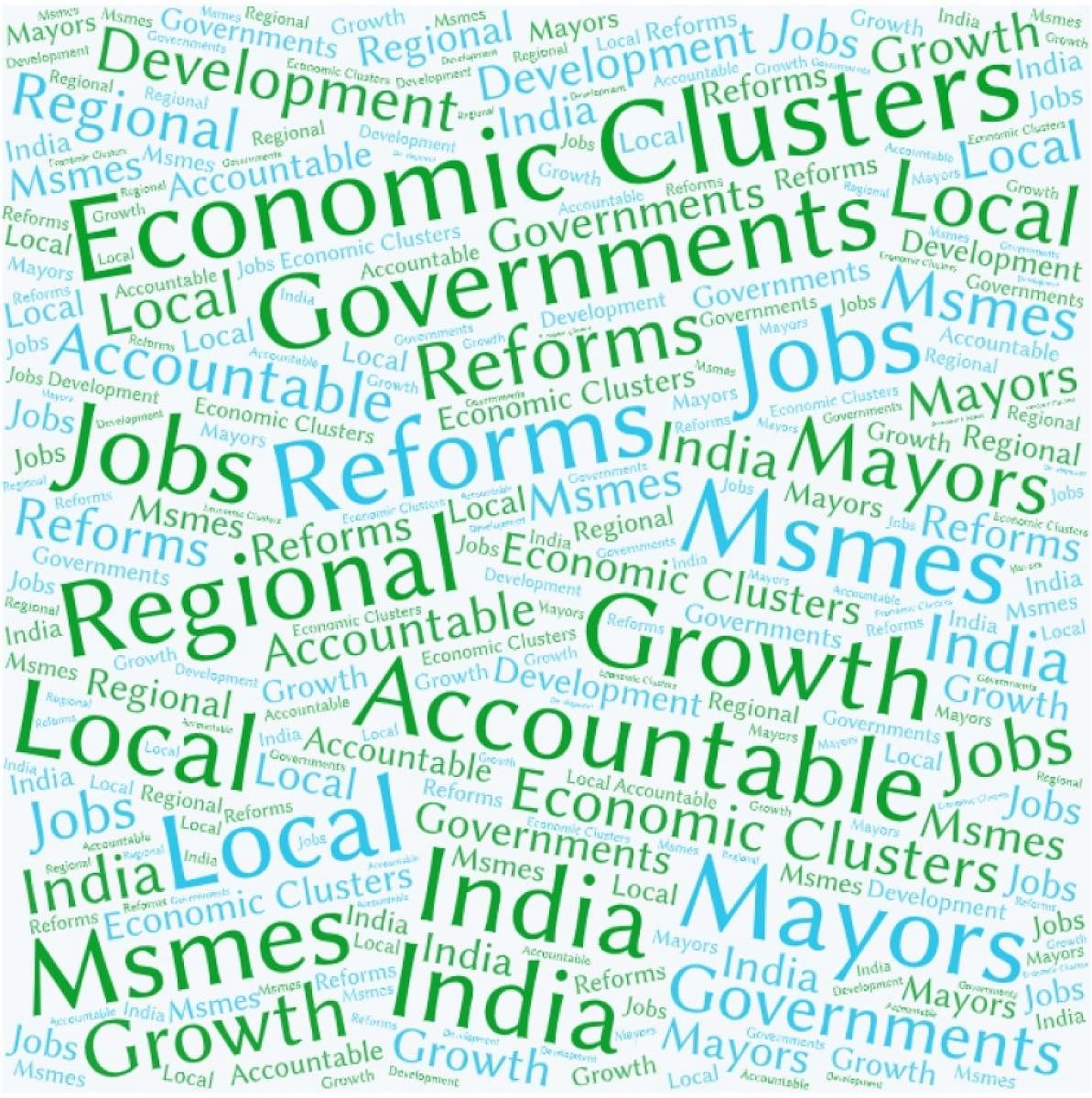We live in times of uneven growth where some parts of India have grown phenomenally while other parts have stunted. Neither an abstract India-level policy nor a state/district level policy is appropriate for achieving rapid and balanced economic growth.
For a large country with 135 crore people, national-level policies have a limited ability in stimulating local growth evenly, as local growth depends largely on local conditions. Similarly, district or city-level policies may understand local conditions better, but they fail to utilise the synergies of the broader region.
Instead of a national, provincial, district or city level perspective, India should identify and develop multiple regional economic clusters centered around its many cities. This approach not only encourages urban development, but it also promotes the development of surrounding rural areas, by promoting the production of value-added and specialised products and services in the hinterland, marketable for a global economy.
Taking a cluster-level view can make the development and governance of India more manageable — organised into smaller self-governing economic units.
Within the country, there already exists a salient template in the form of the Delhi NCR region, which since 1985 has been planned by the National Capital Region Planning Board (NCRPB) as a “unique example of inter-state regional planning and development” aimed to “promote balanced and harmonised development of the Region, and to avoid any haphazard development.”
The success of this governance model is visible from the fact that surrounding cities aspire to get the Delhi NCR tag to attract investment, as evidenced from the recent request of four Rajasthan cities to be officially a part of the Delhi NCR region.
The pearl river delta economic zone of China is a globally cited example of a highly successful economic cluster. The region has also benefited from an early experience of being a Special Economic Zone (SEZ) with more relaxed regulations and taxation. Today the region holds an indispensable position in the global supply chains.
An international think tank, GaWC classifies cities on the basis of their centrality to the global economy. London and New York are called alpha ++ cities as they are at the pinnacle of the global economy.
It also classifies 53 other cities as alpha cities that connect important economic regions to the world. Only two Indian cities get included: Mumbai and Delhi.
At a level below; it also classifies 80 beta cities that connect secondary economic regions. Only two other Indian cities make the list: Bengaluru and Chennai. In contrast, GaWC classifies four Chinese cities as alpha (including two in the pearl river delta economic zone alone), and thirteen Chinese cities as beta. The difference between India and China could not be starker.
India needs to develop more alpha and beta level cities which will be at the heart of economic clusters that will include smaller towns/villages, together producing globally valuable products and services.
Some government initiatives like the development of economic corridors across the country (between Mumbai and Delhi) are encouraging but they need to be expanded in regions that are currently facing a metropolis vacuum, such as the Hindi heartland (Lucknow-Kanpur, Allahabad-Varanasi, Dhanbad-Bokaro), or the North East (Guwahati-Nagaon).
Similarly, Ministry of Micro, Small and Medium Enterprises (MSME) has initiated an MSME cluster development program where closely situated enterprises producing similar goods or services, will be identified and provided targeted support, at individual and cluster level.
Such an initiative has great potential and needs to be scaled up (from enterprise clusters to economic clusters) and placed at the heart of India’s development policy.
Similarly, the smart city mission is another encouraging step, but the mission’s focus remains at a city level and lacks a cluster level perspective. The smart city mission focuses on new infrastructure projects and their smooth planning and execution by a special purpose vehicle.
However, we need policies that go beyond and can improve the quality of everyday urban governance. In the absence of good urban governance, a poor urban environment (pollution in Delhi, or traffic congestion in Bengaluru) may lead to lost global economic opportunities for the cities.
The cluster level of view economic governance will require new types of local leadership. The current local leadership and governance are vertically diffused.
Hence, when river water floods Patna or Mumbai, everyone in the hierarchy — from the chief minister to local bureaucrats — is held accountable for the failure in the area.
Such vertical diffusion of accountability and power leads to confusion and hampers the ability of local governments to plan and take decisions. We need clarity.
Hence, we need empowered and accountable mayors and local governments, that can raise revenue, enact new laws, and respond promptly to the local conditions without frequent interference.
Economic cluster
The decentralisation of power at the local level also needs to be coupled with more coordination between different local governments of an economic cluster.
The higher levels of the government play a limited role here in facilitating and coordinating between different local governments.
Clearly defined responsibilities and powers of local governments can ensure that higher levels of government play a coordinating role, without undue interference.
India has been traditionally organised along geographic and not economic lines. Our economic clusters, however, span across multiple administrative divisions.
We need a better way to tap the synergies between these divisions, by empowering the local governments and relying on decentralisation and coordination to achieve focussed, rapid and balanced economic growth.
(The writer is Assistant Professor, IIM Bangalore)
